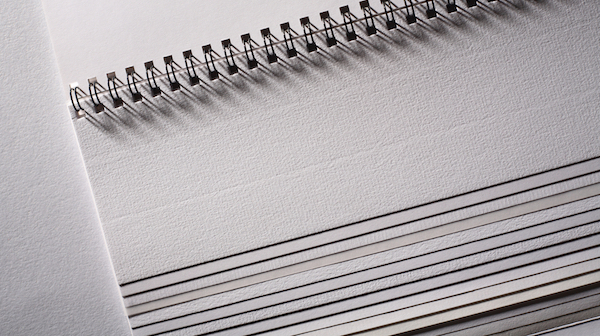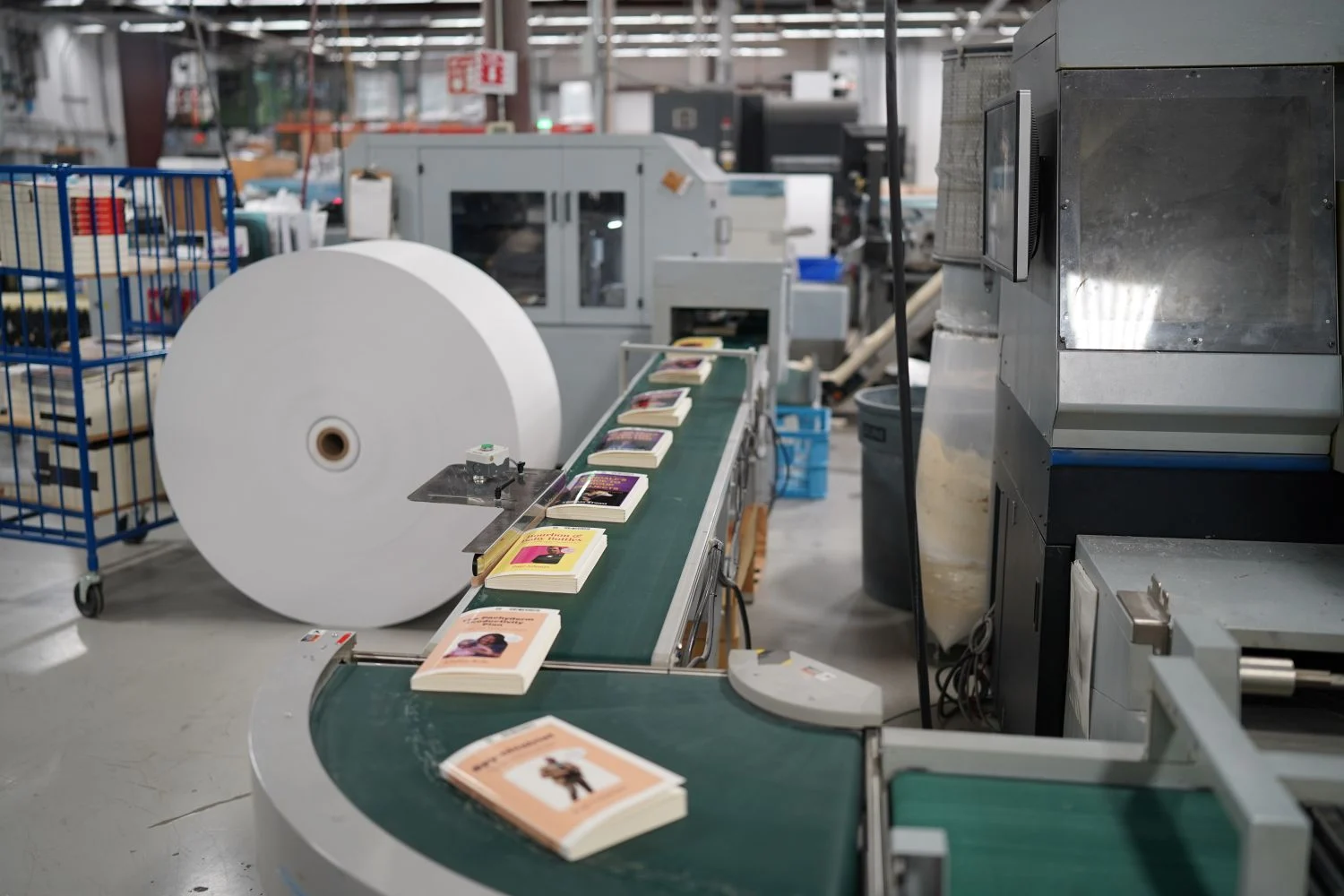A lot goes into a successful print publication. You need quality content to engage your audience. You need a page design that supports your content’s flow and is pleasing to the eye. And because all of this is conveyed in print, you need to select a paper best suited for your delivery method and reader preference.
The paper you choose is as much a part of your brand perception as the content you print on the page. Missteps in the paper selection process can lead to a less desirable end-product, and possibly less desirable production and distribution costs.
Given how important paper choice can be, here are a few qualities to consider when selecting paper:
Paper weight
You may have heard someone mention 60# (sixty pound) paper when referring to the heaviness of their paper stock. And, you may have noticed that 60# “text,” which is similar to copy paper, is quite different from 60# “cover,” which is similar to business card stock. So, what’s going on?
 The answer is that “text” stock and “cover” stock have different basis sizes, or measuring systems. Each calculates the weight of 500 sheets of paper, but text stock weighs sheets of 25” x 38” paper while cover stock weighs sheets of 20” x 26” paper. If you do the math, you’ll find that you would need approximately 110# text stock to equal the apparent heaviness of 60# cover stock.
The answer is that “text” stock and “cover” stock have different basis sizes, or measuring systems. Each calculates the weight of 500 sheets of paper, but text stock weighs sheets of 25” x 38” paper while cover stock weighs sheets of 20” x 26” paper. If you do the math, you’ll find that you would need approximately 110# text stock to equal the apparent heaviness of 60# cover stock.
Since a paper’s weight directly affects the weight of the finished product, it’s important to ask how your preferred paper selection will impact mailing and distribution costs.
Paper thickness
I didn’t mention thickness when discussing paper weight because paper thickness (sometimes referred to as caliper) is impacted by production and finishing techniques used during paper manufacturing. A 60# text stock with highly compressed fibers will weigh the same as a less compressed 60# text stock, but the highly compressed stock will be thinner and stiffer to the touch than the less compressed stock.
Paper thickness is an important consideration given that it directly affects the thickness of the printed publication. In turn, the thickness of the printed publication directly affects binding needs.
Paper coating
For book, magazine and catalog printing, you’ll most often hear discussion about “coated” or “uncoated” paper. Although all paper starts as uncoated, it can be finished with a coating process that fills small crevices and results in a smoother, less absorbent paper.
Picture-heavy publications tend to be printed on coated stock, which is harder for ink to penetrate. Since the coating keeps the ink at the top of the page it can help produce more vibrant colors and images. When talking about coated stock, “gloss,” “silk” and “matte” finishes are common and are typically selected based on the desired look and feel of the end-product. For instance, gloss paper can create a greater visual contrast, but it can also produce more glare.
Publications that are going for a warmer look and feel may bring out those qualities by using uncoated paper, which is more absorbent than coated stocks and thus allows more ink to penetrate the paper surface. Uncoated stocks are also easier to write on because of their rougher surface texture.
Paper brightness, whiteness and shade
Brightness, whiteness and shade each measure the resulting color appearance of white paper.
Brightness uses a 0-100 scale to measure the amount of blue light reflected by a sheet of paper. Because it doesn’t measure the reflection of other light wavelengths we sense with our eyes, two paper stocks with the same brightness can appear to be different shades of white.
Whiteness measures a paper’s ability to reflect all visible light wavelengths and also uses a 0-100 scale. Most commonly, whiteness is measured with D65 illumination, which represents outdoor daylight and avoids the variety of indoor lighting characteristics. Paper that reflects more of the “cool” light wavelengths will appear to be a crisper white.
Shade doesn’t use a scale, but instead refers to color characteristic groupings. Among white paper stocks you may commonly see groups like true- or balanced-white, blue- or bright-white, and cream- or warm-white. Many publications use blue-white paper because it appears whiter than true-white paper, which reflects the entire color spectrum equally. Although used less often, cream-white paper can give a publication a warmer, more earthy look.
Paper opacity
Sometimes referred to as “show-through,” opacity measures the visibility of text and images from the underside of a printed sheet. Like brightness, opacity uses a 0-100 scale and most printing paper falls in the 80-98 range.
The thinner a paper stock and the more the paper allows ink to soak in, the easier it is to see text and images showing through the printed sheet, and the lower the opacity rating of the paper. “Opaque” paper grades are available that have been manufactured specifically with increased opacity in mind.
Paper sustainability
Organizations, whether printers or consumers of print, face challenges related to the sustainability of our environment, cost containment and resource regulations. Thankfully, new technology is helping us minimize our carbon footprint and develop strategies to reduce negative environmental impacts.
Given this, many print buyers require paper certified by the Sustainable Forest Initiative® (SFI®) and the Forest Stewardship Council® (FSC®). Many also seek out print providers with established chain of custody procedures to ensure that they purchase, track, produce and deliver products with raw materials harvested and produced from responsible and renewable sources.
Paper consultation
Walsworth’s Paper Management Team can find the right paper solution for all of your offset printing needs. We analyze paper procurement from all angles to find the best strategic fit on each job. Fiber source, processing methods and recyclability are considered along with price, quality and end-use application.
Please contact Walsworth to discuss paper options that can help you better represent your brand. We look forward to working with you for a paper consultation.






